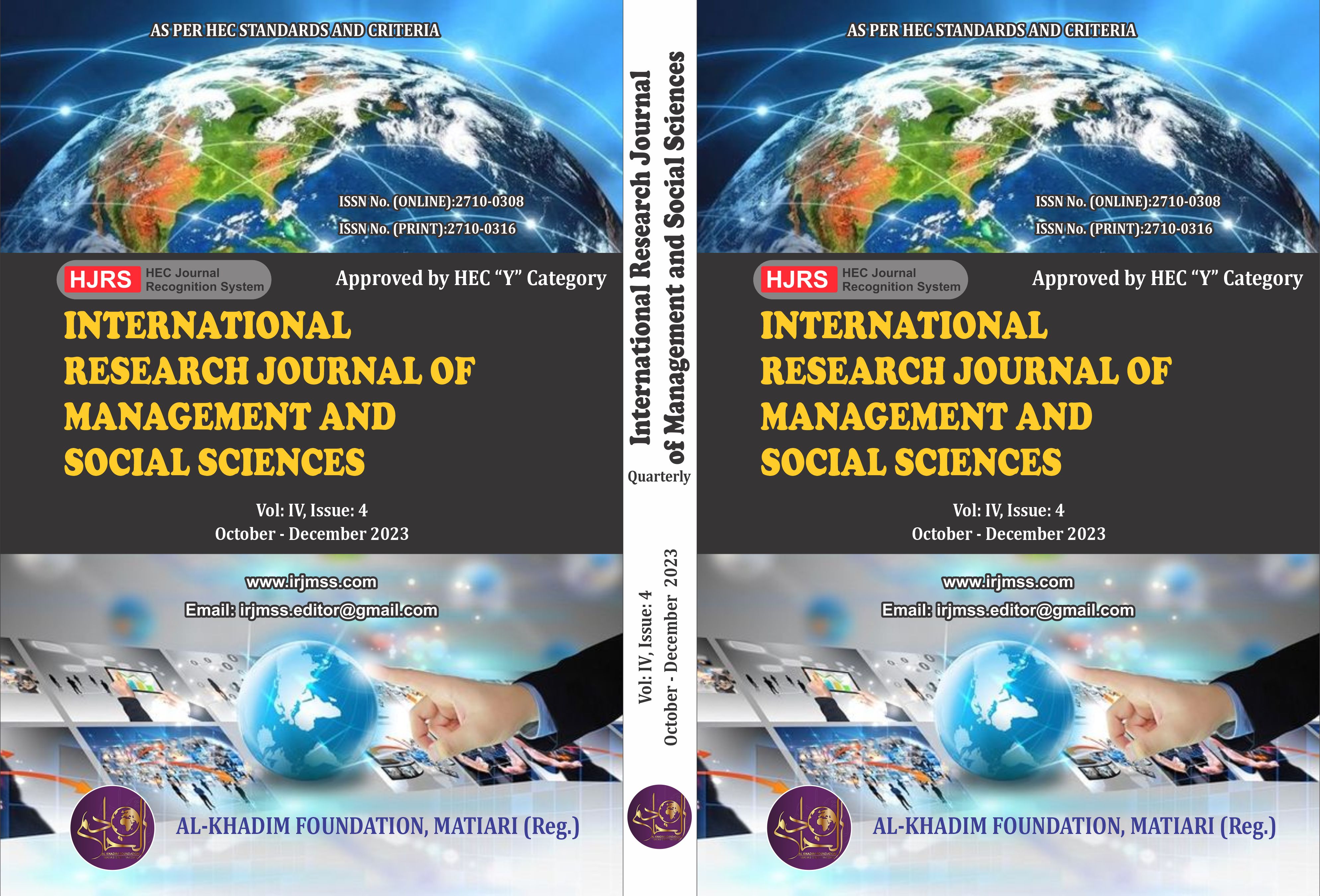China-Pakistan Economic Corridor as a Viable Economical Solution to Energy Shortfall in Pakistan
Keywords:
CPEC, Energy Shortfall, Viable SolutionAbstract
Energy is the backbone of any country which stabilizes other segments and sectors of any country. Pakistan has been facing energy crises, in past decades due to expensive energy projection approaches, political frustration, subsidies, limited reserves, and non-implementation of modern sources. China-Pakistan Economic Corridor (CPEC) deals majorly with the energy management and administration of Pakistan to ensure the shipping of China and GDP growth of Pakistan. The initiative of CPEC in 2013, by the states of China and Pakistan has proven the management and administration of effective energy projection and distribution. The interest of both states is true in management in the sense, the energy crises of the country are minimized and the management is altering as effective. The present study is conducted from the same perspectives, highlighting the viability of CPEC for energy crisis management of the country. The study is descriptive and qualitative in approach based on previous research, articles, and CPEC projects. The results of the study expressed that CPEC is the only viable solution to the energy crises of the country, reducing the energy cost, utilizing renewable sources, altering the hydel projection of energy, eradicating provincial disputes, and ensuring future prosperity. The viability of CPEC projects for energy management was highlighted when in 2013, the future shortfall of energy was expected at 7000 MW, which was recorded as 2500 MW in 2020 which could be minimized after the completion of the CPEC energy projects. After completion of projects, the installed capacity will be reached up to 66 GW.
References
Abrar, M. (2017). Hostroy made as cpec becomes functional. Profit. Retrieved from www.siasat.pk.
Ali, G. (2015). China and Pakistan Prepare to Establish Economic Corridor. Central Asia-Causcasus Analyst.
Ali, H., & Ahmad, F. (2018). CHINA PAKISTAN ECONOMIC CORIDOR (CPEC)- AN ECONOMICALLY VIABLE SOLUTION TO THE ENERGY CRISES OF PAKISTAN. Journal of Historical Studies, 91-113.
Bhattacharjee, D. D. (2015). China Pakistan Economic Coridor(CPEC). Indian Council of Wolrd Affairs, 1-15.
Energy, M. o. (2019). Pakistan Energy Year Book.
IEA. (2017). World Energy Outlook. Retrieved from https://www.iea.org/publications/freepublications/publication/WEO2017SpecialReport_EnergyAccessOutlook.pdf.
Kessides, I. (2013). Choas in Power: Pakistan's electricity Crises. Energy Policy, 55(0), 271-285.
Khan, A. A., Mehmood, Z., Shahzad, A., Chightain, A., & Javed, A. (2014). Evaluation of Wind Energy Potential alongside Motorways of Pakistan. Asian Journal of Applied Sciences and Engineering, 3(9), 7-15.
Khan, S., & Ashraf, F. H. (2015). Analysis of Pakistan's Electric Power Sector. Blekinge Institute of Technology, Department of Engineering.
Markey, s. (2016). Behind China's Gambit in Pakistan. Expert Brief, Council on Foreign Relations.
MOPDR. (2013). 11th 5 year Plan 2013-2018. Ministry of Planning Development & Reform.
Pattyn, V., Molenveld, A., & Befani, B. (2017). Qualitiave Comparative Anlaysis as an Evaluation Tool: Lessons from an Application Development Cooperation. Amercian Journal of Evaluation, 1-20.
PEYB. (2016). Pakistan Energy Year Book. Ministry of Energy.
Report, N. C. (2013). Solution for Energy Crises in Pakistan. Islamabad: Islamabad Policy Research Institute.
Shah, S. (2015). China 's Xi Jinping Launches Investment Deal in Pakistan. The Wall Street Journal, Retried on March 20, 2021, Retrieved From http://www.wsj.com/articles/chinas-xi-jinping-set-to-launch-investment-deal-in-pakistan-1429533767. .
SIR. (2020). State Industry Report. National Electric Power Regulatory Authority.
Small, A. (2016). CPEC: Road to Future. Herald, Retrived on March 20, 2020, Retrieved from http://herald.dawn.com/news/1153559.
USAID. (2016). "Green House Gas Emission in Pakistan", factsheet. Retrieved from https://www.climatelinks.org/resources/greenhouse-gas-emissions-factsheet-pakistan.
Zeb, A., Haider, & Shaheen, F. (2015). Imporving Energy Regulatory Framework of Pakistan. Intenrational Jounrnal of Renwable Energy Research, 5(4). 1069-1079.






